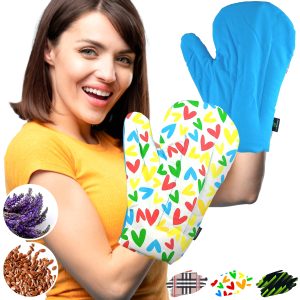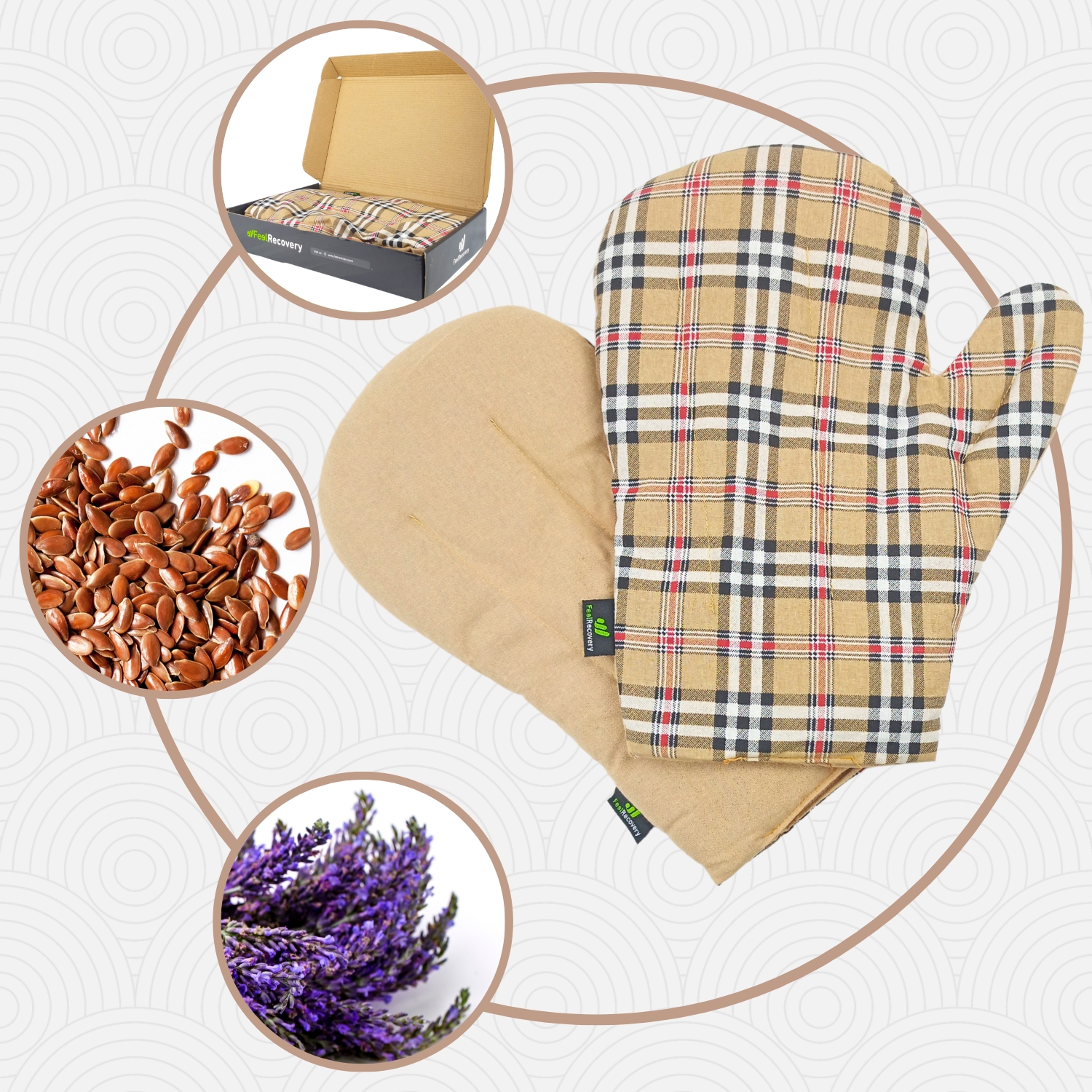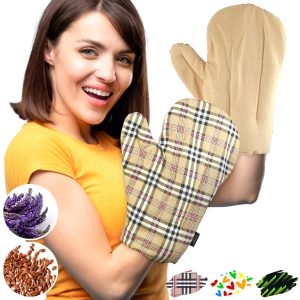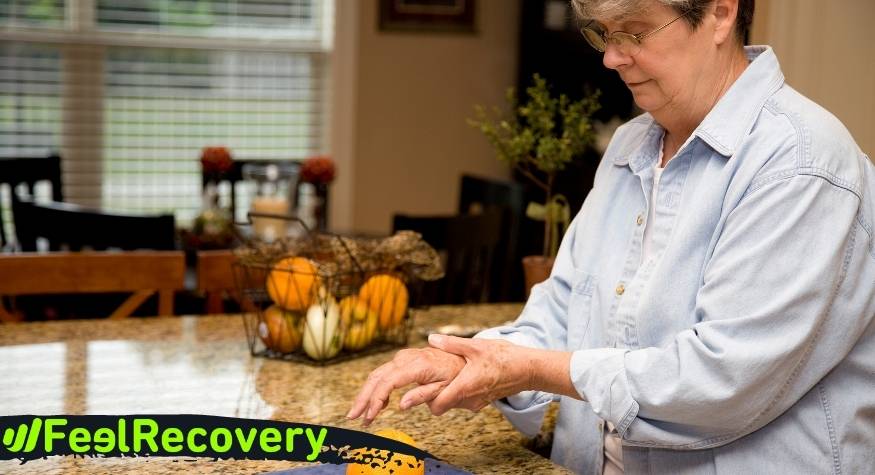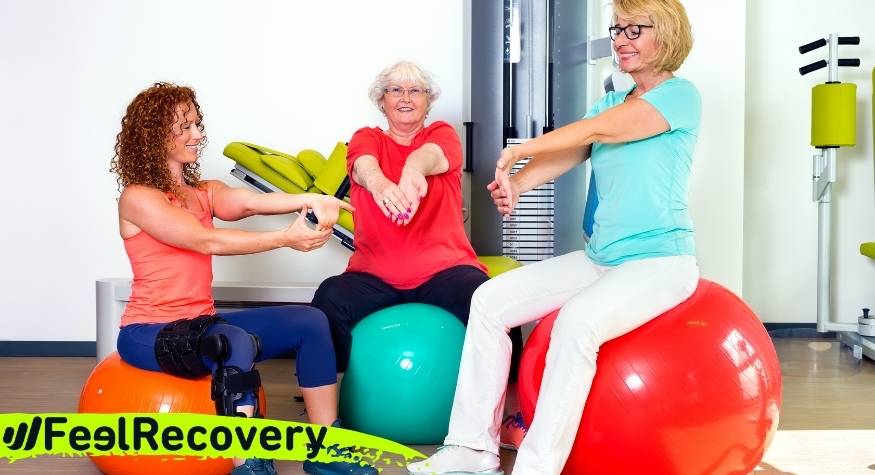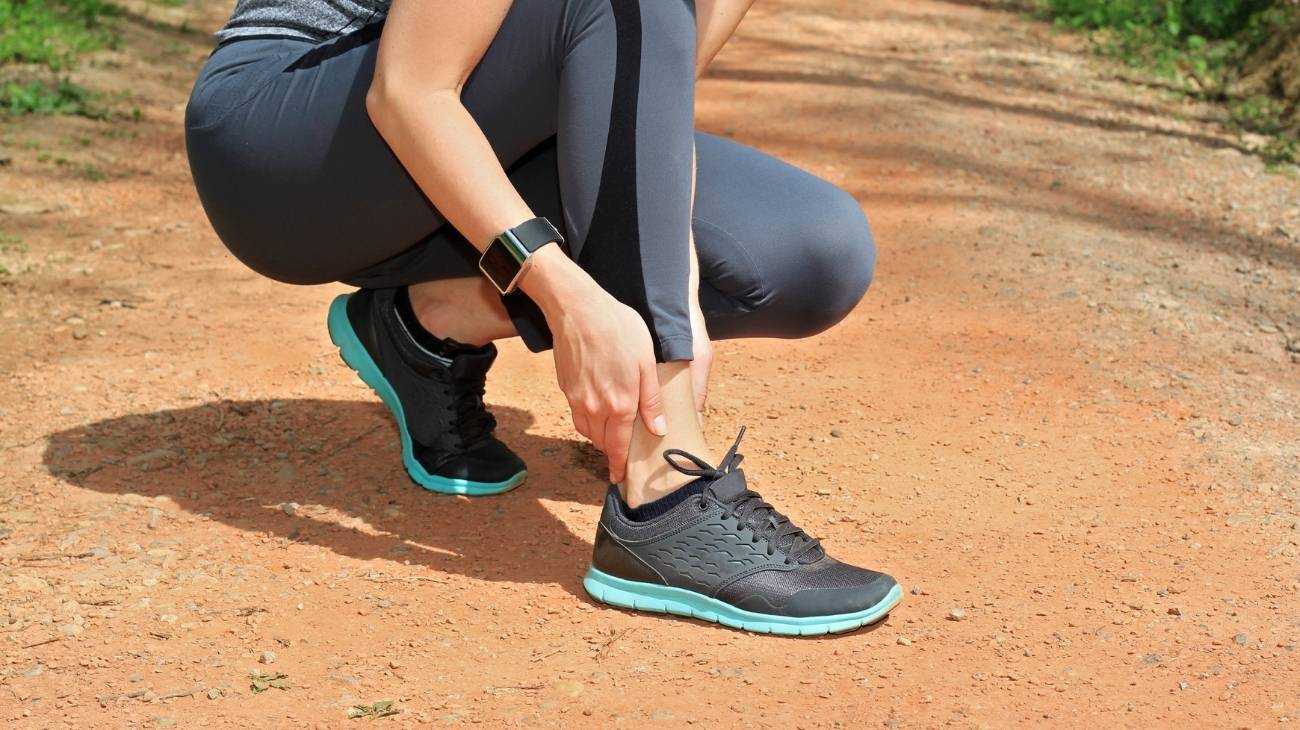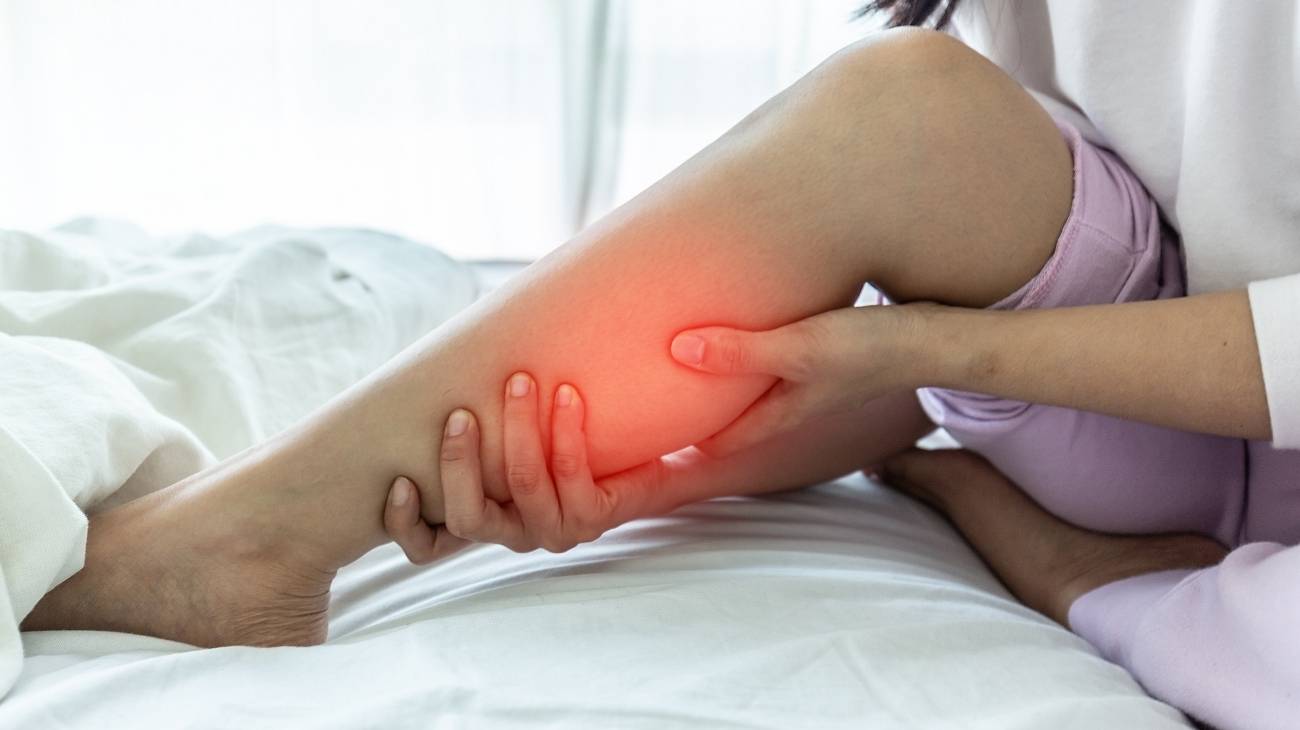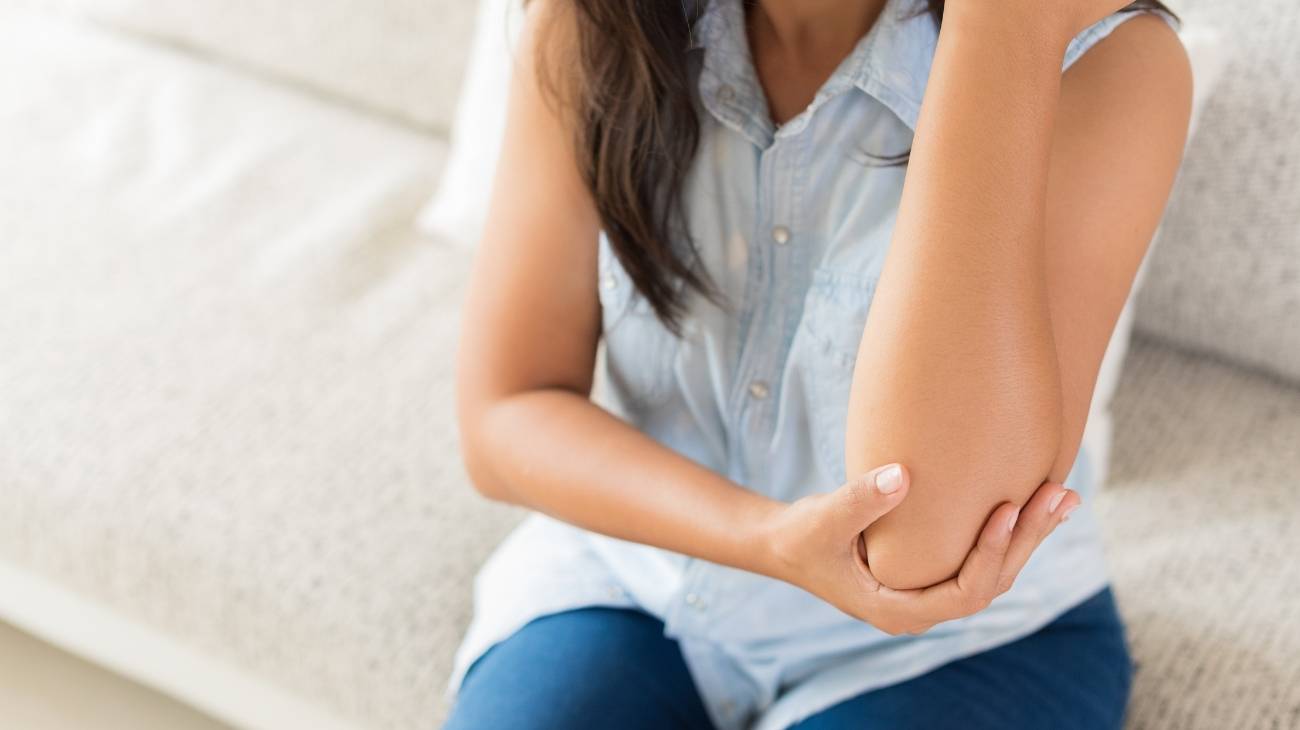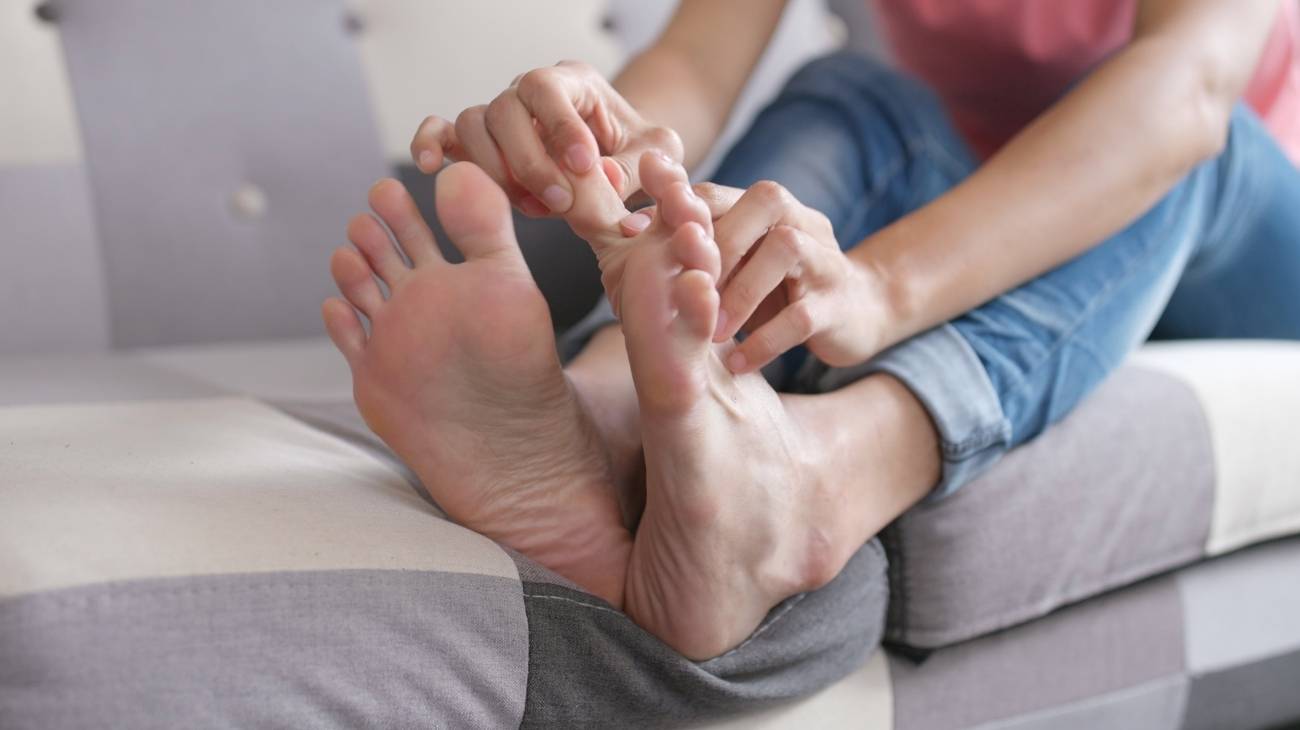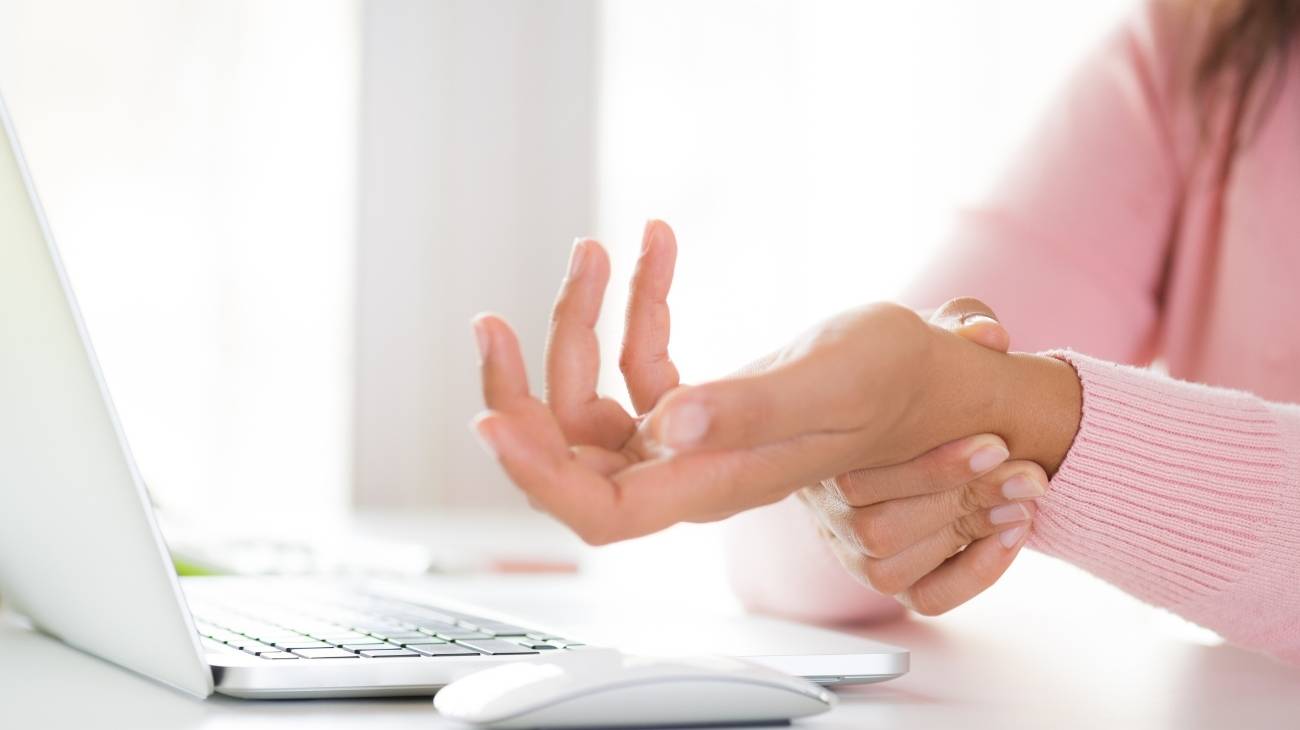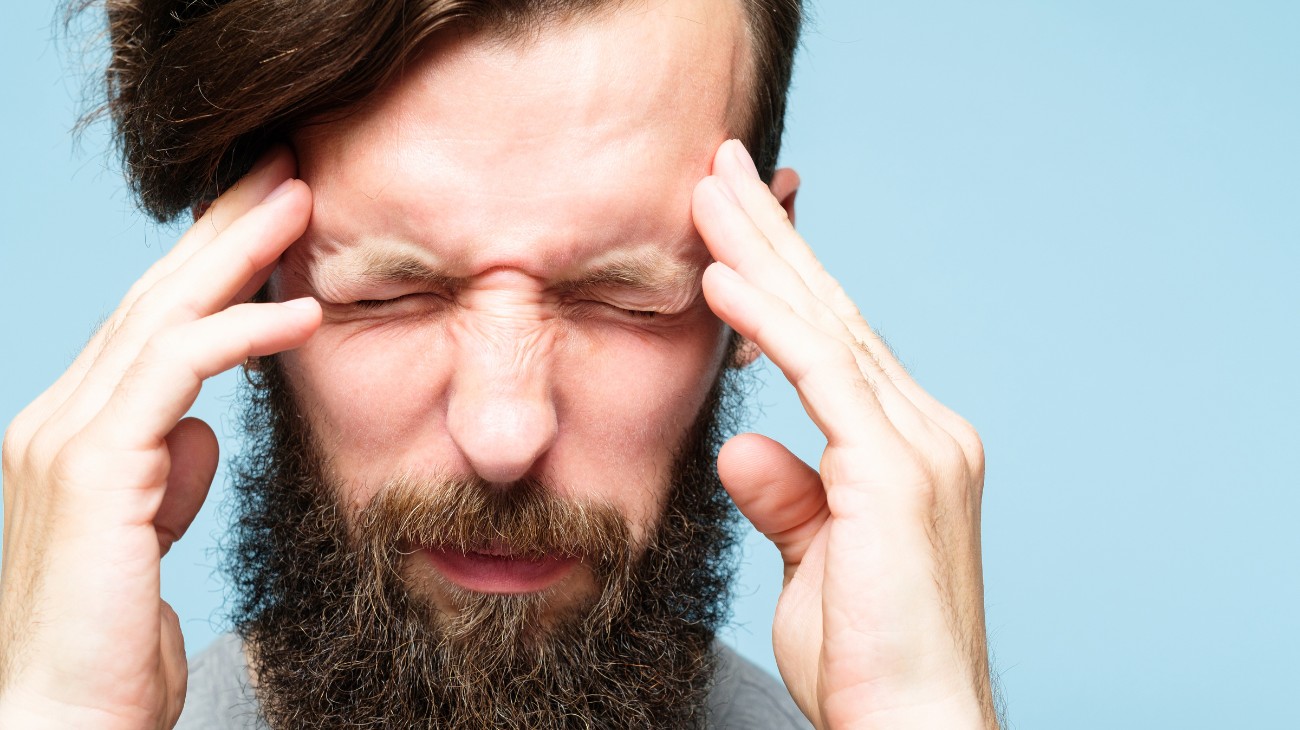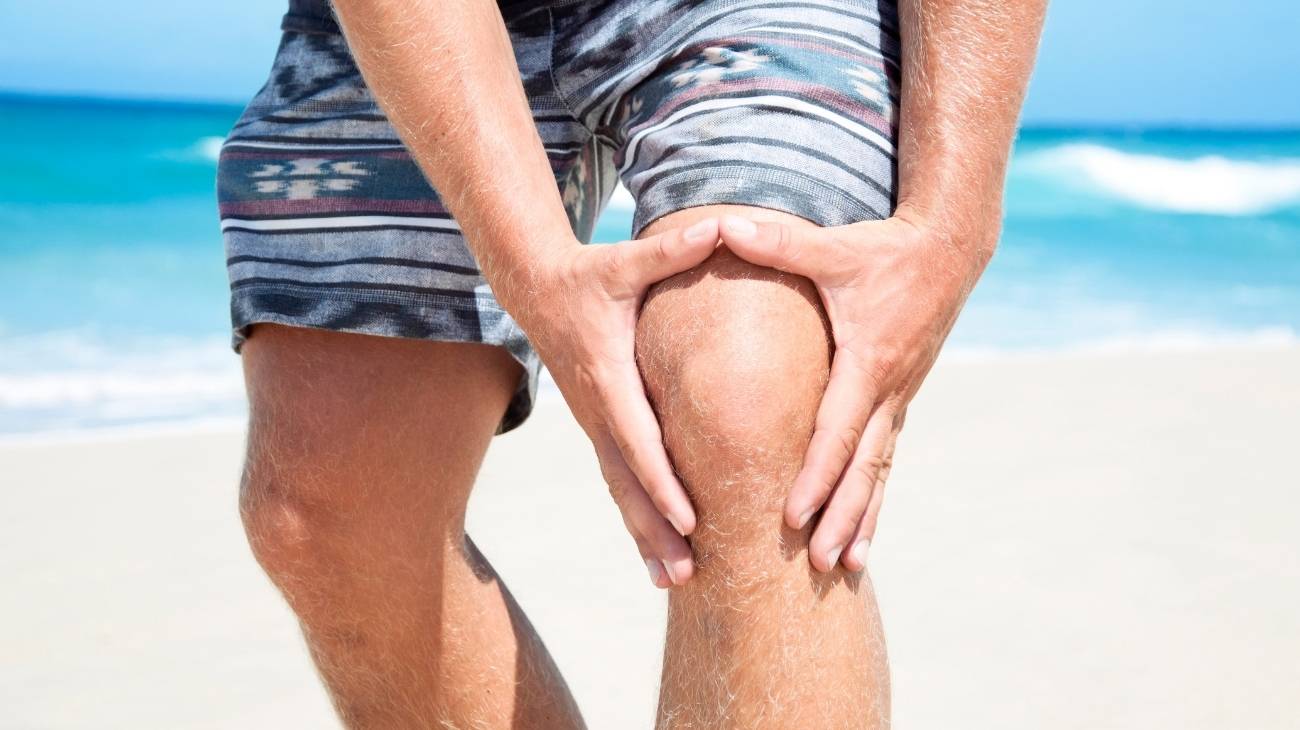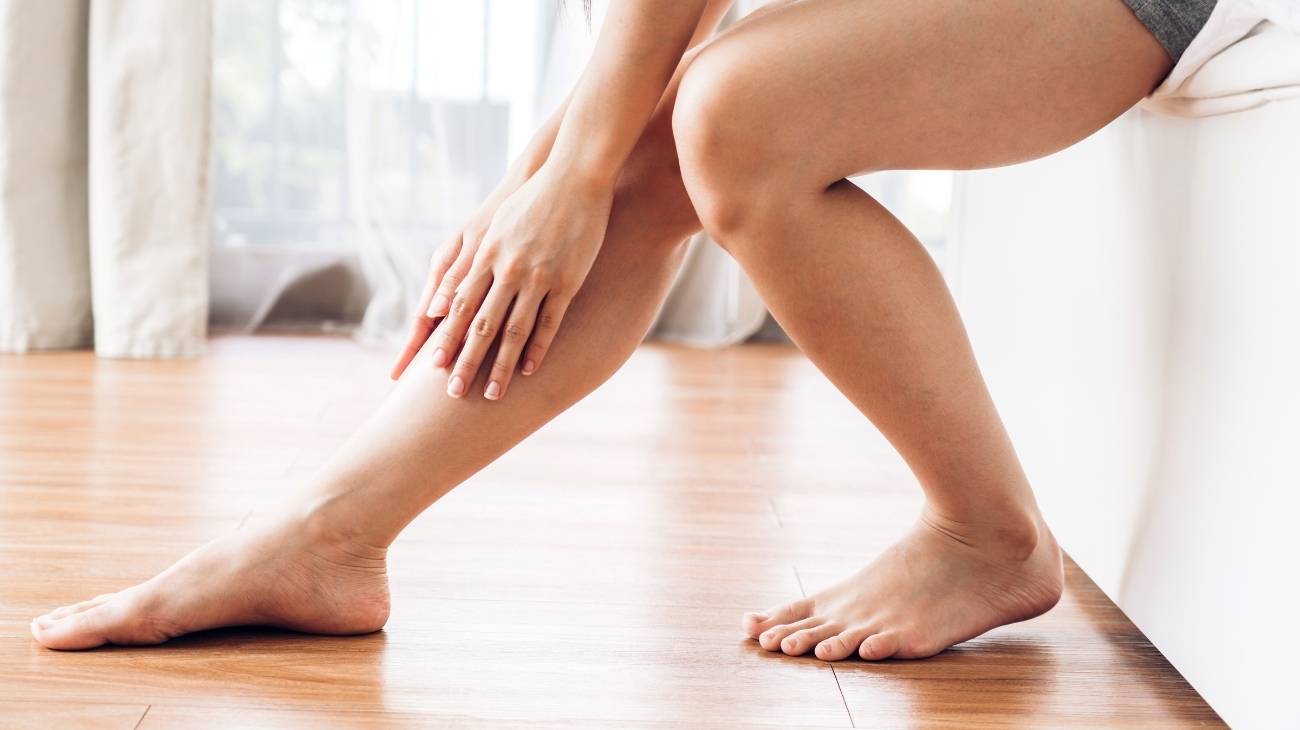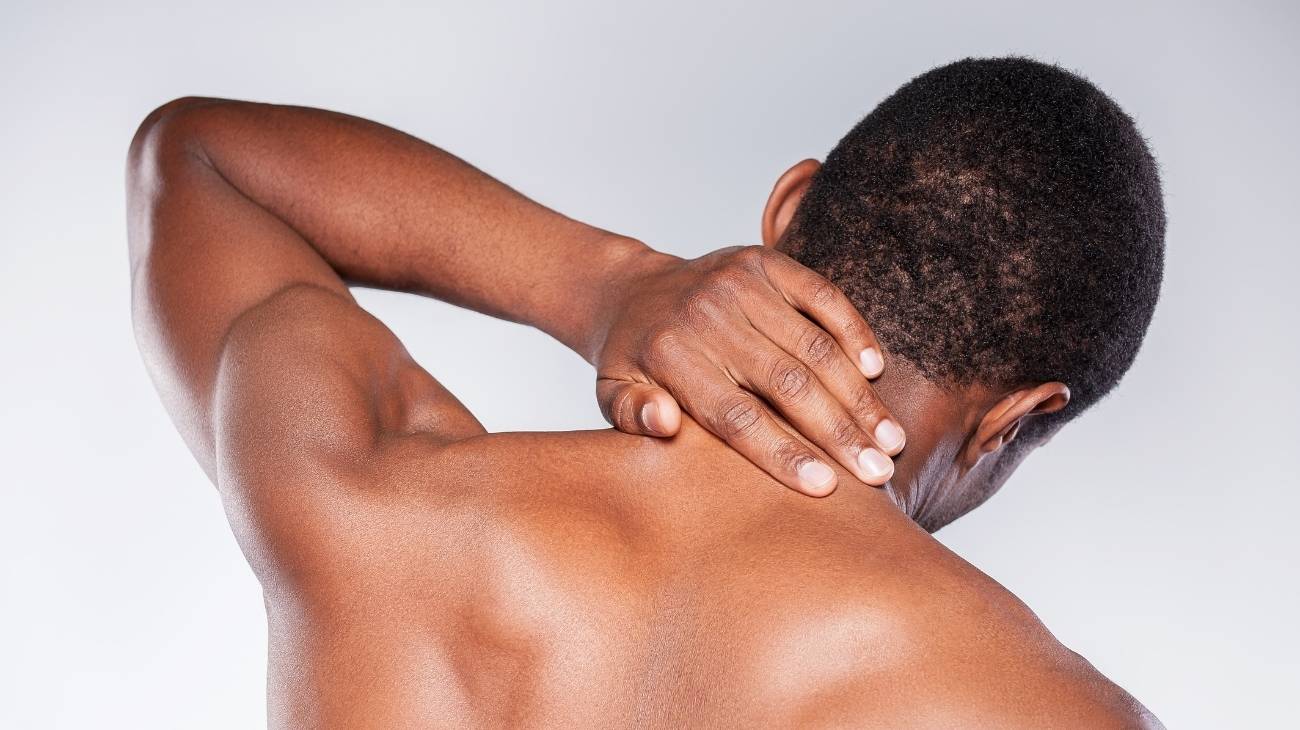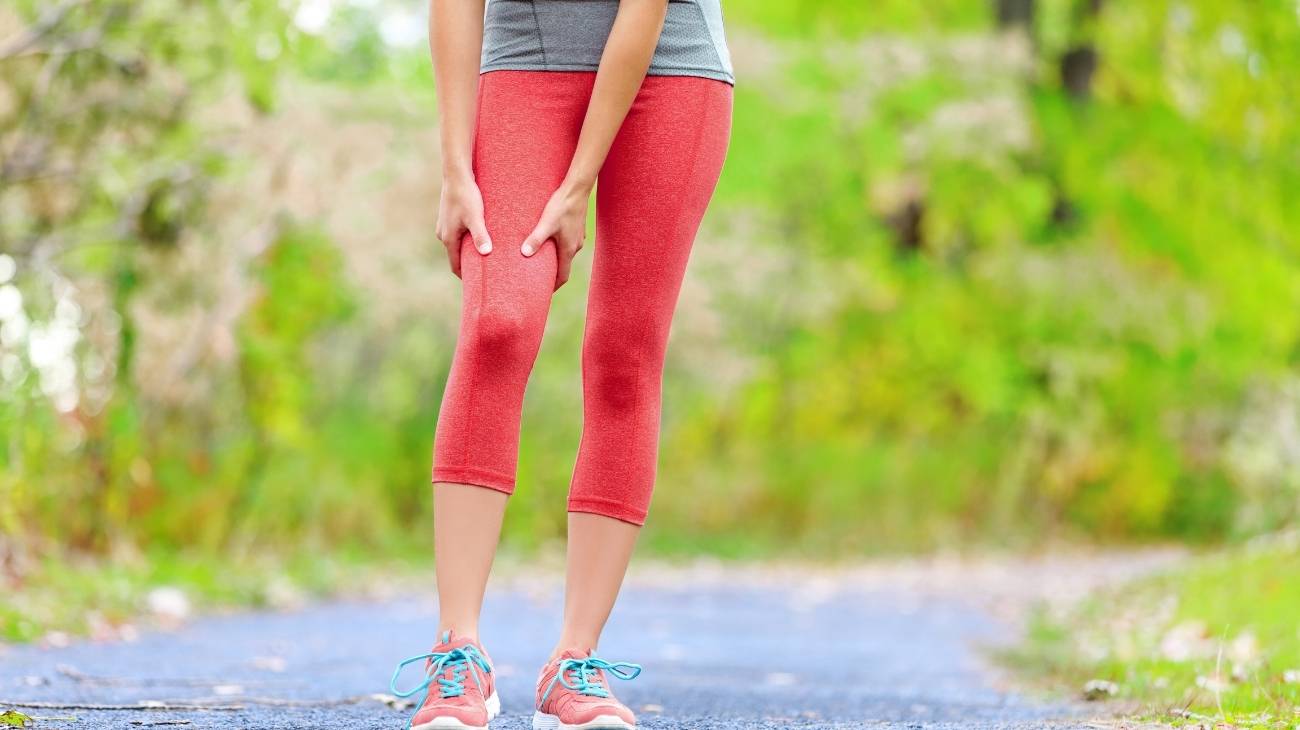- What is pain in the hands and wrists and how to identify it?
- Best products for hand and wrist pain relief
- What causes pain in the hands, fingers and wrists and what are the causes?
- What kind of diseases can cause pain in the joints of the hands and fingers?
- What are the symptoms and types of pain that make us think we have a hand injury?
- How can we relieve hand and wrist pain through complementary and non-invasive therapies?
- How to apply the RICE therapy step by step to reduce pain in the hands, fingers and arms?
- How to prevent future hand and wrist pain?
- Why should we avoid pills and injections to relieve pain in the hand area?
For many people, reducing pain in their hands and wrists means being able to continue to carry out everyday activities. When we are unable to do so, the world stops, we feel incapacitated, our mood changes and we may even suffer from anxiety.
Don't want to find yourself in this situation? Discover with us how to eliminate muscle and bone pain in the hands or what to do to relieve pain in the wrists in general. We will tell you why we often notice this damage, what effects each disease has in the long term and, of course, how to reduce the pain and prevent it.
What is pain in the hands and wrists and how to identify it?
Our hands are made up of no less than 29 joints, as well as 28 extra bones and one of the most complicated networks of nerves, ligaments and tendons, which, by the way, are quite exposed. It is this complex input that allows us to perform the finest and most complex tasks with ease.
The small and delicate parts of the hands are much more prone to injury, deterioration and rapid loss of function. This is when pain, among other symptoms, makes an appearance. On this occasion, know that we can make a fairly basic identification of pain. We define well where it hurts and also what type of tissue is hurting us.
However, as you will see later, there are many diseases and circumstances that produce almost identical symptom patterns. This means that, even if we know what hurts, we hardly know why and, of course, that you cannot have a correct diagnosis.
Best products for hand and wrist pain relief
Bestseller
-
Acupressure Mat and Pillow (Black/Gray)
$49.95 -
Acupressure Mat and Pillow (Green/Navy)
$49.95 -
Acupressure Mat and Pillow (Pink/Bordeaux)
$49.95 -
Foot Massage Roller for Plantar Fasciitis (Black)
$19.95 -
Foot Massage Roller for Plantar Fasciitis (Green)
$19.95 -
Foot Massage Roller for Plantar Fasciitis (Pink)
$19.95 -
Microwave Arthritis Gloves (2 Mittens) (Hearts)
$29.95 -
Microwave Arthritis Gloves (2 Mittens) (Oxford)
$29.95 -
Microwaveable Heating Pad for Pain Relief (Hearts)
$19.95 -
Microwaveable Heating Pad for Pain Relief (Oxford)
$19.95 -
Microwaveable Heating Pad for Pain Relief (Sport)
$19.95 -
Wrist Brace (Black/Gray)
$19.95 -
Wrist Brace (Green/Navy)
$19.95 -
Wrist Brace (Pink/Bordeaux)
$19.95
What causes pain in the hands, fingers and wrists and what are the causes?
The hands, which are totally exposed due to their function, can be damaged in a number of circumstances. The most common causes that cause us to injure our hands on a daily basis are:
Trauma, blows and falls
The sensitivity and size of the parts of the hands means that blows to them are more dangerous than to many other parts of the body. This means that minor blows can cause serious damage and those that are really severe may require surgery or even end up causing an unsuccessful recovery. For this reason, when we suffer a trauma to our hands, we must go to a medical centre quickly, even if the situation does not seem to us to be serious enough.
Pain when typing on the keyboard or using the mouse
This pain is related to the beginning of ankylosis which, in reality, comes from a lack of mobility. We rest the lower bones of our hands and leave them in the same place for hours on end. This results in an unnatural posture of the wrist and an extra strain on the joints, which have to stretch more than usual to carry out these tasks.
In addition, repetitive movements, as in any other part of the body, lead to a loss of range of motion (the tissue becomes malaccustomed). Similarly, these activities, because they are considered simple and require little or no effort, are not accompanied by breaks, which are also necessary in order not to overload ligaments or joints between phalanges.
Pain when lifting weights
There are, of course, circumstances in which lifting weights, whether in a box or in the gym, can cause pain. Although this is common, we have to say that this should not be the case. This is because we are doing the activity badly, as the lifting of any weight should be done with the arm muscles, which are the ones that provide the greatest strength and which are strengthened.
If our hands hurt because of this type of activity, it is because we are not doing it properly. Of course, it is necessary to correct the error and let the wrists and hands perform the functions for which they are trained, which are many and very important.
Pain from cold hands and fingers
The cold causes less blood to reach the area, and on the contrary, the lack of blood causes our body to cool down. This can lead to a serious vicious circle in which our hands are no longer functional. If we do not have any injuries, it is important that all tissues are well nourished, oxygenated and clean.
This is achieved by a correct and continuous blood flow. If this is not the case, the functions of each of the parts begin to be impaired, making it more difficult to do anything. If you feel cold pain, numbness and stiffness are the most common symptoms. It is essential to keep your hands at the right temperature and to exercise and move them to get the blood flowing (unless you have suffered a recent injury that temporarily incapacitates you).
Stress and emotional causes
These points are closely related to hand pain. We use our hands for everything and if we feel unable to go about our daily lives we may become clumsy and even perceive psychosomatic pain that we blame for our lack of ability. Stress is a general discomfort for our whole organism and attacks the weakest parts of our body and is particularly effective in affecting the nervous system.
Exercise and strenuous exertion
It is not only weightlifting that can cause damage. There are many other exercises, such as push-ups, for example, or some gym machines focused on back muscles which, if used incorrectly or for too long, will also cause our wrists and hands to suffer, especially the palms.
Likewise, we can extrapolate this to any effort we make, even if it is not related to physical activity. The wrist is made up of fragile parts and must be maintained so that hard work does not overload it. In any case, this type of situation can lead, above all, to strains, dislocations, intense pain in the last phalanges of the fingers and tenderness on the back of the hand.
What kind of diseases can cause pain in the joints of the hands and fingers?
When it comes to diseases and other pathologies, we find that a great many of them can lead, directly or indirectly, to pain in our hands, including the wrists and fingers. The best known are:
Arthrosis
This pathology consists of the degeneration of the joints. It occurs when we make excessive use of our hands and wrists in certain sports or work activities, due to the simple passage of time or due to some other disease that degenerates the cartilage and leaves the joints exposed, which collide with themselves.
The hand hurts when you do activities, but the pain goes away with rest. In cases of advanced arthritis, the fingers are visibly deformed. Symptoms are more intense first thing in the morning and worsen over time.
Osteoarthritis
It is the inflammation of the joints of the hands caused by some other disease, so there are many types of arthritis such as rheumatoid arthritis or psoriasis. Considering the number of joints in the hands, this is one of the most serious problems in the area. They become stiff, leaving the fingers completely straight or with a flexion that is impossible to move.
Of course, there is also pain. All the symptoms worsen over the years to the point of not being able to articulate the fingers and therefore losing almost total mobility, making it very disabling. It leads to many other pathologies, also painful, such as dactylitis. The inflamed finger looks like a sausage and loses definition in its shape.
Sprains
The ligaments of the wrist are stretched. This means that they change their size, stretching more than they can cope with and causing overstretching. It usually happens because we make the flexion or rotation movement abruptly or because of a blow.
The wrist hurts quite a lot and there is a significant inflammation, sometimes accompanied by an increase in temperature in the area. In the most severe cases, the wrist may even become deformed. Although there are different degrees of sprains, generally for mild cases, the treatment consists of keeping the inflammation to a minimum and resting so that the tissue returns to normal.
Fractures
This is a fairly frequent problem, especially in one or more fingers, due to the fact that the hand is continually exposed to all kinds of blows and trauma. The bones, on this occasion, usually break completely. But it is not necessary for this to happen, we can find partial fractures, which are more difficult to diagnose if we do not carry out an X-ray.
The pain is very strong, even practically unbearable in the worst cases. Deformities due to poor bone welding during recovery are also normal. There is swelling and the skin becomes hot, these are two basic symptoms. Occasionally, we may find bruising or a failure of sensation at the skin level.
Bursitis
The bursa in the wrist becomes irritated and inflamed. When this happens, they cannot fulfil their function, which is to help movement between the tissues where they are located and prevent them from rubbing against each other (especially in the case of bones and nerves).
Infections, repetitive movements with the wrist joint, or prolonged restlessness in the area are the usual reasons for this. Pain, skin discolouration if inflamed (may even be accompanied by fever), tender pressure and stiffness occur.
Tendonitis
One of the many tendons in the hand becomes inflamed, becoming sensitive at the joint level and causing us to feel pain both when we touch the area and when we move it. We may also feel numbness and tingling of the skin in the area outside where the tendon is located. Sudden movements such as sprains or overexertion are the most common causes. Of course, it is a minor problem that can be cured with simple home care.
Carpal tunnel syndrome
The median nerve in the wrist is compressed, resulting in loss of sensation in all fingers except the little finger. The fingers become numb and there is an unpleasant tingling sensation. It is difficult to perform psychomotor activities because the perception of what we feel changes. The effort and the unpleasant tingling if you do activities become painful.
De Quervain's disease
This is tenosynovitis. In this case, the sheath that guards two of the tendons in the hand, the extensor pollicis brevis and abductor pollicis longus of the thumb, is specifically inflamed. This makes the diagnosis fairly straightforward. You will notice moderate swelling, pain, tenderness on palpation and, in the worst cases, the tendons may be blocked when attempting to move the thumb. Compression of the area may require a type of medical compression, prescribed by medical specialists during early recovery.
Raynaud's syndrome
Raynaud's syndrome is a condition in which the blood vessels are constricted by low temperature (vasoconstriction), usually due to a connective tissue disease. The pain is accompanied by a change in skin tone, turning pale and even turning blue or reddish. The lack of blood in the fingers causes them to tingle.
Nodules
These are bony lumps that appear in the joints of the hand. They often result from osteoarthritis, i.e. because the cartilage has been worn away. Rubbing stimulates abnormal formation, stiffness and pain. Its treatment depends on its evolution as well as on the type of nodules, so that medical consultation is always mandatory.
Trigger finger or stenosing tenosynovitis
A thickening due to disease or simply inflammation of the tendons can lead to this disorder. The joints stick together making movement impossible, so that the finger remains flexed in a certain position. It is a problem that, over time, causes pain and, in addition, when trying to return the joint to its position, the bony joint produces a snapping sound.
Hammertoe
The tendon of a finger is injured at the first joint, so that this part of the finger is deformed. This is more obvious if the bone is also broken. The fingertip cannot be placed in its normal position and the problem is painful.
Ulnar deviation
The wrist and the fingers are turning outwards. This is caused by an inflammation process that has become chronic. Of course, movement becomes difficult, the normal shape of the hand disappears and pain, which can become severe, is experienced.
Ganglion
A cyst of synovial fluid that grows on the wrist or on the back of the hand. It is a lump that can be seen and felt, which can become inflamed depending on the activities we carry out at any given time and which causes pain that runs in parallel but is not so severe as to be incapacitating and which, physically, does not limit our mobility.
Dupuytren's contracture
What actually happens is that the connective tissue of the palm thickens, causing the fingers to flex towards the palm. As such, the flexion is not painful, but we do suffer pain as time goes by due to keeping the fingers with the joint forced.
Acute infections
These are far more common than we might think and their biggest negative point is that their effects can be tedious and long term, and can become incapacitating. In addition, infections spread, which means that little by little, several of the tissues of the hand are affected. We feel sharp pain in the focus, very strong, and also generalised pain, somewhat milder. We may ooze or pockets of toxins may form inside the hand, which could lead to other pathologies.
What are the symptoms and types of pain that make us think we have a hand injury?
When a hand is injured, pain is usually the symptom that raises the alarm. However, this can be different and, moreover, it can be accompanied by different symptoms in each case.
The most common types of symptoms
- Pain: The pain felt in the hands when we are injured is, in general, moderate, quite bearable, except if the injury includes complete breaks. Injury problems, except for trauma, are not severe and pain relief is easy to achieve.
- Swelling and inflammation: The small, delicate parts that make up our hands do have a high propensity, when injured, to swell. It is a normal process of our organism that seeks to protect them, so it is common for your fingers or hands to become quite swollen in the event of what you might consider a minor problem. Even so, it is important to be vigilant because inflammation can have serious causes that go far beyond a blow or overexertion.
- Increased temperature: The temperature rises at the same time as the hands swell, they are sister symptoms. Much more blood flows through our organism and this increases the temperature of our skin.
- Numbness: This can occur for many reasons: cold, keeping the hands still in a bad posture, flattened, nervous problems, lack of irrigation, etc. It is a symptom that disappears with the simple movement of the hands joint by joint and with vigour and intensity, except in cases where the cause must be treated, such as nerve impingement.
- Stiffness: Ankylosed areas, contracted tendons and other circumstances cause part of our hand to remain stiff, much stiffer and with difficulty in carrying out its normal movement.
- Numbness andtingling: Before becoming stiff, it is normal for the hand to become numb. This also occurs when it is cold or when we stop moving our fingers, especially if we already suffer from a condition that favours this symptom. The tingling appears because the blood flow is in a practically hypersensitive area, so that we can feel it perfectly well. The same happens if we touch ourselves, the sensitive skin reacts by feeling a kind of tingling or tickling that is not pleasant.
- Feeling of weakness: Numbness can also make us feel weak precisely because we do not have an adequate perception of our hands and are unable to use them to their true capacity.
- Redness: This is common if you have been hit by a blow, both because of the trauma itself and because the swelling of the hand is accompanied by this symptom, which becomes more evident the more blood flows through the affected area. It is not serious and only indicates that the hand is being assisted by our immune system to protect it from damaging agents.
- Reduced movement: This occurs especially when making the movement of giving gas to the handlebars of a motorbike and also when articulating the fingers, an action that cannot be completed.
- Joint instability: This is a strange symptom but, in the wrists, it indicates that we have a serious injury. We are unable to control their ability to move, which can cause a lot of pain, strain the tissues, move damaged parts, etc.
- Cramps: A strange symptom that can occur due to quite serious diseases such as sclerosis, other problems such as dystonia, low amounts of minerals, dialysis, damaged nerves, etc. It is unusual to have cramps if you have suffered a conventional injury such as a strain or dislocation.
- Muscle contracture: If the many muscle fibres in our hands are no longer functional, contracture will occur. This in turn means that these tissues are not cleaned, oxygenated and nourished. This may lead to a situation where the nervous system sends the wrong signals to the brain.
- Bruising and bruising: When hit, especially in areas rich in blood flow or due to movement of tissues, we may notice that the colour of our hands (or part of them) changes. Haematomas appear due to the unexpected accumulation of blood, damaging the vascular walls.
- Hypersensitivity to touch: Problems in the nerves, especially pinching, cause the nerve endings to become much more sensitive and, when we touch them, we feel a lot of tingling or even an unpleasant or uncomfortable sensation. At the same time, we lose the ability to perceive correctly what we touch with the affected hand.
- Clicking sounds: Sometimes, such as when trying to stretch the joints or when turning the wrists, we may hear clicking or popping sounds.
Types of symptoms depending on the area
- Pain in the fingers: In the fingers, what you will most notice, without a doubt, is stiffness, as they are not a difficult area to mistreat except for trauma. They are also the ones that are the coldest due to a lack of good blood flow, so they become numb more easily than the rest of the hand and we lose control of their movement beforehand, preventing us from carrying out certain tasks. Throbbing when we have joint stiffness is a must.
- Pain in the wrist: When we have problems in the wrist and we move it, it is quite normal to hear clicks. Spherical lumps also appear with or without swelling if an internal ganglion is created.
- Pain in the palm of the hand: In this case the most common symptom is tingling and tenderness. The pain is not very frequent unless you have suffered a fracture in a palmar bone or a strain with soft tissue rupture. Note Dupuytren's contracture, which occurs specifically in the palmar area.
- Pain in the dorsal aspect of the hand: ganglions that appear in this area present both pain and deformity (spherical bulge that can become inflamed). Some nerve problems and any rheumatoid problems will cause pain.
- Pain in the whole hand: The occasions when the whole hand hurts are, basically, when you have arthritis and osteoarthritis. The pain is generalised and is usually accompanied by difficulty (and impossibility over time) to carry out manual activities.
How can we relieve hand and wrist pain through complementary and non-invasive therapies?
If you need relief from hand and wrist pain, there are all kinds of alternative or complementary therapies available to traditional medicine. These will help you feel much better, reduce pain, heal and prevent future pain without the need for medication.
Hot and cold therapy
Hot and cold therapy is ideal when we have rheumatic diseases, which are very common in the hands. This is because the hands are at a point where thermotherapy and cryotherapy are recommended. In this way, we enjoy the benefits of cold and heat but not their possible harm.
Compression therapy
Compression is used in a number of circumstances, especially when tissues become loose or stiff. The aim is always to maintain the correct position of the tissues and that is why it is necessary to compress the area. There are diseases in which this therapy must be performed by a doctor because it is the main treatment.
Compression therapy basically consists of using compressive methods such as compressive garments, gloves or bandages to press, reposition and keep the damaged tissues in place. In addition, infectious fluid or synovial fluid is filtered out in the event of leakage, making them much cleaner. In any case, it both prevents the situation from worsening and makes recovery faster and more effective.
Acupressure therapy
The delicacy of these extremities often makes indirect contact necessary, especially if we have a very serious problem or one that causes a lot of pain, such as arthritis or a fracture. In this case, what we do is to treat other points of the body, which are called meridians, to pulse them and make the benefit of working on them reach the area where we feel pain. In this way, we treat the symptoms without having to force our hands.
- One point to work on is Waiguan SJ5, which is located between the ulna and the radius, about 3 or 4 cm from the wrist bones, on the back of the forearm.
- The Earth Points are located on the front side of the arm, just one centimetre above the wrist. One of them is perfectly centred and the other two are situated on either side, leaving a distance of a little less than one centimetre from the central point.
- Very well known is the Hoku L14 point, which increases the energy of the hand. It is located on the back of the hand, in the hollow between the bones of fingers 1 and 2.
- We will also work on Hou Xi SI3, on the outer side of the hand, 2 centimetres from the end of finger 5. It is used to work on the flexion and extension of the fingers.
The relief of pain in hands and wrists through acupressure is done with the help of moxibustion, i.e. by bringing heat to the point and then pressing with the finger. For osteoarthritis, it is also very suitable to use a massage ring that we roll gently over the hands themselves and more intensely on the forearms, in particular on the nerve points that stimulate the hands.
Massage therapy
Massage is not always indicated. It is necessary to consider whether there are fractures, how severe the contusions are or whether cysts or other deformities have developed. Depending on this, it is up to an expert to consider whether a massage is suitable and, of course, to choose the type of massage that will bring the most benefit.
The ideal is to use fascial massage techniques, where all the tissue covering the motility systems of the hand is worked on. This means that the fascia is wider and allows the elements it contains (bones, ligaments, etc.) space to move more freely and recover better.
Cryotherapy
The application of cold to the hands can have great benefits, firstly, if we have suffered an injury, as happens in any other part of the body. This means that we feel a lot of pain and the area becomes inflamed. Cold is ideal for reducing blood flow and has a great analgesic capacity.
Remember, however, that cryotherapy is suitable in cases of acute symptoms, especially pain, but also tingling, e.g. inflammation, etc. Moreover, its use must be responsible, not applying cold for too long or too many times a day, as it can also have side effects.
Thermotherapy
If your hand pain is long-standing or chronic and is not accompanied by swelling, injury or putting heat on your hands or immersing them in hot water can be an excellent idea. Warmth irrigates blood, so we improve blood flow, which is a good thing when our tissues are weak, when we suffer from diseases that make it difficult to get blood or oxygen to our fingers. In addition, putting something warm on our hands will have a sedative effect, reducing stiffness and soothing pain.
Other effective alternative therapies
Other very simple remedies that offer positive results against hand pain are:
- Natural remedies using plants: Vapours based on analgesic, calming and anti-inflammatory plants will be useful. Boil them and breathe in the vapour in a deep and relaxed manner. Choose comfrey, juniper, rosemary, horsetail, lavender, ginger, etc.
- Aromatherapy: You can enhance the effect by adding aromatherapy to the use of plants, which is nothing more than putting a drop of essence of one of the plants or some other species in the water to give much more intensity. For this, an essential oil of blackcurrant, borage or primrose would be the best.
- Acupuncture: In addition to the points we have seen in acupressure therapy, acupuncture can help us to relieve pain and, in general, to make dactyl arthritis more bearable. It involves inserting acupuncture needles in the areas between the knuckles, not on the back of the hand but at the level of the phalanx that is already attached to the back of the hand.
- Osteopathy: If you do not have fractures, you can go to an osteopath to carry out some exercises with you, such as self-mobilisations, in which traction is sought, and other general or analytical mobility exercises. You can also work, in case they are related, other pathologies that cause or favour them by means of all kinds of joint manipulations.
How to apply the RICE therapy step by step to reduce pain in the hands, fingers and arms?
The RICE therapy can be useful on some of the occasions mentioned above. Always remember that it is used for acute pain, recent injuries, when the area is inflamed and if we suffer from bone chronification.
The steps, which are very simple, include:
- Protection: The first step implies that you stop producing damage to the area. Stop the activity that is causing pain and keep your arm in a comfortable position, where the pain is milder but natural. If you need to travel to a medical facility, try to cushion the area by covering it with a thick garment or similar.
- Rest: This therapy includes an essential step, which is rest. It is not about remaining immobile, far from it, but about not giving the affected areas more work than usual and, in fact, reducing the intensity and quantity of daily tasks, as well as helping us with any resource that can help us to facilitate movement with as little pain as possible. Avoid playing sports, cooking, lifting weights and activities involving continuous hand movements such as knitting, writing, etc.
- Ice: A strong, acute pain can be reasonably relieved by applying a little cold. This works in two ways: it anaesthetises the pain and reduces inflammation by reducing blood flow to the area, which, again, makes it hurt less.
- Compression: Depending on the area and what has happened to you, you may not need compression. In any case, it is a matter of keeping the affected area, using bands or garments, in a natural posture and shape. In this way, we avoid damaging movements and help healing to take place more quickly.
- Elevation: If your problem is not due to lack of circulation, what you should do is try to keep your arm raised, just enough so that it is above the height of your heart. This will ensure that the swelling does not increase, thus reducing the pain.
How to prevent future hand and wrist pain?
This pain, which can become totally disabling with age, should be stopped in its tracks or, in fact, avoided if we are people with triggers or favourable factors to suffer from related diseases. To do this, consider the following prevention methods for hand and finger pain as well as arm pain.
- Breaks: If you use your hands a lot or do sessions in which they are involved in intense situations, you should take breaks. In the first instance, rest every few minutes (depending on the task you are doing). Take advantage of this time to follow the other recommendations we give you.) In addition, try to alternate activities that make your wrists, hands or fingers work hard with others that are less demanding. More specific actions that require a greater degree of manoeuvrability should not exceed half a minute if we do not want our bones to suffer without us realising it.
- Postural hygiene: Many of the postures we adopt throughout the day influence how we use our hands, even in cases where we think they are not important. The most important thing is that the hands are aligned with the forearms when doing tasks. Similarly, back postures are closely related to the harm or wellbeing of the arms and, consequently, the hands.
- Stretching: Depending on your situation (propensity to rheumatoid diseases, age, type of work), do not rule out doing some simple stretches. These can be done at the start of the day or before doing the specific activities that strain your hands. Rotating your wrists, drawing elbows with them, making gripping movements by opening and closing your fists, tensing towards the palm and towards the back finger by finger are some of them.
- Exercises: A little further on are specific exercises, which an osteopath or other specialist will show you depending on the problems you suffer from. They are more complex, at the same time as they involve more benefit and also help to treat problems we already have. Although it may not seem like it, there are many exercises for the hands, wrists and fingers and it is usual, in fact, that these are different from day to day. In any case, an expert will be able to give you a table with the types of exercises, repetitions and circumstances in which to perform them. Especially important are the tissue strengthening exercises, which keep the bones more protected, less exposed and make them work less.
- Ergonomic products: If you spend too much time with your hands supported, get an ergonomic product, either a support product or a garment such as a glove or elbow brace. This will prevent them from being in continuous contact with hard surfaces, which can lead to anything from calluses to bone wear and tear.
- Correct movements: Every activity that causes pain has a correct way to be done. You may simply not have followed the correct guidelines. Know how to do each activity and do it that way. Any false move can be very unpleasant, especially for the joints (and hands are full of them). Look very carefully at how to perform actions that involve force by flexing the wrists and always try to distribute the weight you move or the force you exert.
- Massage: All the stress from the shoulders, arms, elbows and forearms ends up in the hands. Therefore, we must pamper them so that they loosen up and remain quick and agile. In addition, they are one of the parts where a good massage produces more comfort, reducing stress in people with hand problems (rheumatic complaints, writers, pilots, sportsmen, office workers, etc.).
- Cold: Similarly, if you know you are prone to or are already developing problems in your arms, hands and fingers, make a habit of applying some cold from time to time, even if you don't feel pain. This will soothe the area and prevent inflammation.
Why should we avoid pills and injections to relieve pain in the hand area?
You should start by knowing that any medication, even if dispensed over the counter, has side effects. This means that, after taking them, you may suffer some negative consequences that are even less bearable than the pain itself. Read any package leaflet and you will see that, in order to relieve the pain in your hands for a short period of time, you may suffer from many other problems.
This brings us to the second reason why we advise against taking drugs for hand and wrist pain relief. You should never self-medicate. At first glance, nothing at all may happen, but depending on the composition of the medication, in the short, medium or sometimes even long term, your body may be poisoned or simply harmed by taking unfamiliar laboratory products.
Add to this the fact that painkillers are not going to cure you, they only make the pain in your hands milder or disappear for a while; when they stop working, it will return. What you have to do is, if necessary, take medication to treat the illness that is causing the pain. For pain, we have already seen that there are a number of non-invasive, natural and scientifically proven pain relief therapies.
In any case, if you have persistent pain that does not improve with the above or with the corresponding treatment, or if your symptoms worsen, you should see your doctor to check whether your treatment is appropriate for your current situation or, if so, to prescribe an analgesic or, directly, to change your treatment and guidelines to be followed.
References
- Panchal-Kildare, S., & Malone, K. (2013). Skeletal anatomy of the hand. Hand clinics, 29(4), 459-471. https://www.hand.theclinics.com/article/S0749-0712(13)00056-5/fulltext
- Lewis, O. J., Hamshere, R. J., & Bucknill, T. M. (1970). The anatomy of the wrist joint. Journal of Anatomy, 106(Pt 3), 539. https://www.ncbi.nlm.nih.gov/pmc/articles/PMC1233428/
- Kijima, Y., & Viegas, S. F. (2009). Wrist anatomy and biomechanics. The Journal of hand surgery, 34(8), 1555-1563. https://www.sciencedirect.com/science/article/abs/pii/S0363502309006418
- KAUER, J. M. (1980). Functional anatomy of the wrist. Clinical Orthopaedics and Related Research (1976-2007), 149, 9-20. https://journals.lww.com/corr/Citation/1980/06000/Functional_Anatomy_of_the_Wrist.3.aspx
- Rettig, A. C. (1998). Epidemiology of hand and wrist injuries in sports. Clinics in sports medicine, 17(3), 401-406. https://www.sciencedirect.com/science/article/abs/pii/S0278591905700922
- Palmer, K. T. (2003). Pain in the forearm, wrist and hand. Best Practice & Research Clinical Rheumatology, 17(1), 113-135. https://www.sciencedirect.com/science/article/abs/pii/S1521694202001006
- Rempel, D., Tittiranonda, P., Burastero, S., Hudes, M., & So, Y. (1999). Effect of keyboard keyswitch design on hand pain. Journal of Occupational and Environmental Medicine, 111-119. https://www.jstor.org/stable/44994926
- Cailliet, R., & Richardson, G. S. (1983). Hand pain and impairment. https://journals.lww.com/plasreconsurg/citation/1983/09000/hand_pain_and_impairment.35.aspx
- MacDermid, J. C. (1996). Development of a scale for patient rating of wrist pain and disability. Journal of Hand Therapy. https://psycnet.apa.org/record/2019-51309-001
- MacDermid, J. C., Turgeon, T., Richards, R. S., Beadle, M., & Roth, J. H. (1998). Patient rating of wrist pain and disability: a reliable and valid measurement tool. Journal of orthopaedic trauma, 12(8), 577-586. https://journals.lww.com/jorthotrauma/Abstract/1998/11000/Patient_Rating_of_Wrist_Pain_and_Disability__A.9.aspx










